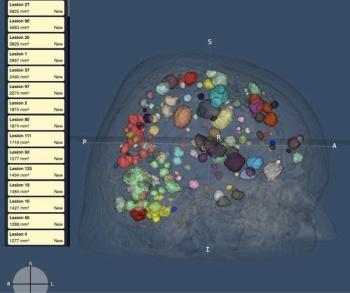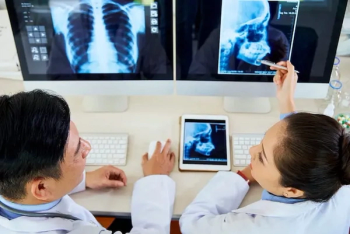
CDRH publishes final guidance for digital x-ray submissions
Revised document streamlines application processAfter more than two years of revision, the Food and Drug Administration’s Center for Devices and Radiological Health (CDRH) has published final guidance for the submission of 510(k) applications
Revised document streamlines application process
After more than two years of revision, the Food and Drug Administrations Center for Devices and Radiological Health (CDRH) has published final guidance for the submission of 510(k) applications for solid state digital x-ray systems. The agency hopes that the document, published Aug. 6 in the Federal Register, will streamline the application process for vendors seeking clearance for digital units.
The CDRH collected responses from equipment manufacturers and such industry advocates as the National Electronics Manufacturers Association (NEMA) and has made a number of changes to the draft guidance published in 1997. Among other modifications, the document now combines radiography and fluoroscopy, whereas the old guidance had them broken out separately, which required that some data be replicated for each. Another revision is that optically coupled charge-coupled devices (CCDs) and photostimulable storage phosphor systems (for computed radiography) are included. Although the agency initially didnt consider these two types of detectors to be solid state, it became clear during the comment period that similar data would be required to describe the operation of CCDs and CR systems, according to Robert Doyle, scientific reviewer in the Centers radiology branch.
Some of the other changes arose from the CDRHs experience with actual 510(k) applications, Doyle said. For example, after verbally telling companies that it was acceptable for clinical trials to image one patient with a digital device and another patient with similar physical characteristics with the comparative analog system, the CDRH has made this informal policy official. Manufacturers are not required to use the same patient in such a comparative trial to prove equivalency, Doyle said.
In the lifetime of a patient, if they get their hand x-rayed for a broken bone, (and a company) wants to take another exposure, the risk is insignificant. But if the company is concerned about the risk, the FDA will accept studies with two patients with similar characteristics, Doyle said.
The 1997 draft document established a 510(k) process rather than a premarket approval (PMA) process for digital x-ray systems. At the time, industry watchers had been expecting the FDA to demand a more extensive review process, in light of the agencys requirement for clinical data to support substantial equivalence of digital mammography systems to their film-based counterparts (SCAN 7/9/97). But the draft gave developers broader guidelines for submissionwhich the Aug. 6 document also supportsthan anticipated. Although final, the CDRHs guidance on digital x-ray submissions remains open for comment, Doyle said.
Since the original document was published, a number of companies have received clearance for digital x-ray units, including Canon Medical Systems, Hologics Direct Radiography Corp. (formerly part of Sterling Diagnostic Imaging), GE Medical Systems, Philips Medical Systems, Siemens Medical Systems, Wuestec Medical, and others. In the pipeline is Cares Builts Clarity 7000 detector, based on CMOS technology, which the company submitted for approval in November of last year and for which it hopes to receive FDA clearance by the end of the year.
Newsletter
Stay at the forefront of radiology with the Diagnostic Imaging newsletter, delivering the latest news, clinical insights, and imaging advancements for today’s radiologists.




